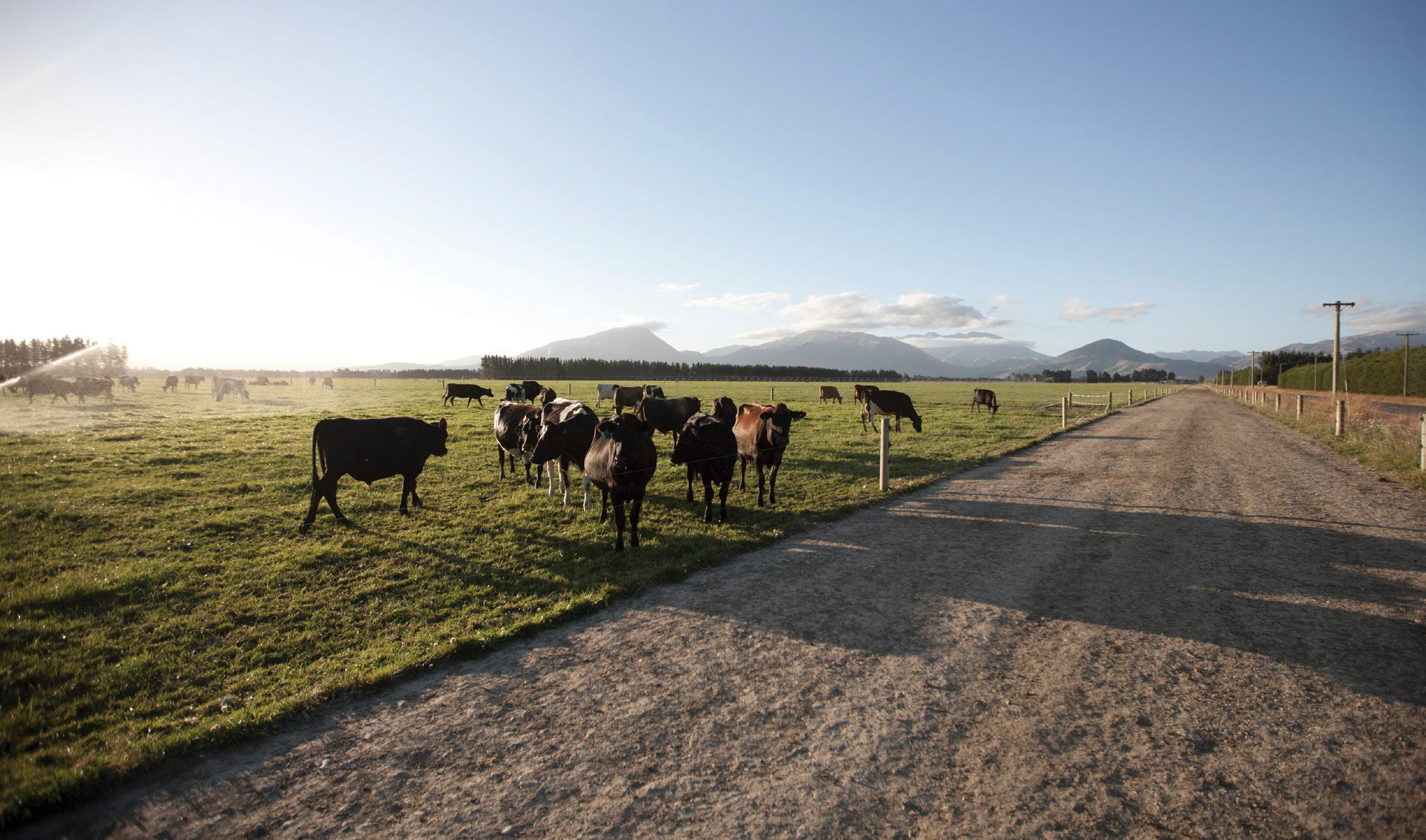
3 minute read
Carla Staples airs her concerns about freshwater legislation
MILKING PLATFORM WEST COAST
Tractor harvesting crop on the Staple’s farm.
Pushing back on freshwater legislation
Carla Staples is happy with the increased returns for dairy but concerned that some of the National Environmental Standards for Freshwater are unachievable.
Autumn has well and truly arrived here on the West Coast with a definite drop in overnight temperatures but still enough warm days and rainfall once a week to keep the grass growing well. As of mid-March, we have shifted the herd to the popular 3in2 milking regime to help extend our grazing round to build up feed heading into the winter. All things going well, we will change to once a day (OAD) milking at the end of April to wind the girls down before drying off late May. The cows are still milking well, and we are still slightly up on last season.
We scanned the herd in mid-February with the empty rate coming in at 14% after an 8.5 week mating. This was a slight improvement on last season even though we used no Controlled Internal Drug Release (CIDRs) for the first time since we began farming. We have already been discussing a new approach for this coming season which will include increasing our mating length to 10 weeks but using short gestation AI bulls for the last 10 days. We should end up with more cows in calf while calving should finish around the same time, well that is the plan anyway. The heifers held well to AI with 65% in calf after our double Cyclase (PG) shot and three days of AI. All in all, we should have plenty of replacement calves hitting the ground early in August.
I am sure all of you would probably agree with me when I say it has been pleasing to see dairy performing very well over the last six months. In particular, the first auction in March was quite unexpected. It has set us up well for a strong finish to the season.
It certainly takes the pressure off when you do not have to worry too much
about the financial side of the business, especially when we have so many new rules to get our heads around before next season regarding the freshwater legislation. It is good to see that DairyNZ has finally gained some traction with the Government around some of the new rules that were virtually unworkable, well in our area on our soil type.
We still think a one size fits all policy just will not work for New Zealand. There are so many variables in farming different parts of the country that cannot be covered by a blanket approach. It would be nice to see some scientific evidence to back up some of the freshwater targets that have been set. I was disappointed after talking to a couple of scientists at a recent field day that, to their knowledge, there had been no input into the new legislation from anyone in their field.
Farm wise, things have been ticking along nicely. We’ve managed to get some silage made and 10% of the farm re-grassed this season. February was very dry by West Coast standards but this meant we could really get through some work. We subsoiled just over half the farm which will make a huge difference when we get some wetter weather. The Swedes really bolted and are looking very healthy, fingers crossed they will yield well when we start grazing them in June. Moving forward to April, we will spray a round of ProGibb and nitrogen to keep building covers into May. We found it a great tool to keep the grass humming when we had cooler weather in late autumn. The annual heifer/calf swap will take place on the first of May. It’s great to have them back onfarm and get them prepared for calving.
We hope everyone has a great end to their season and makes the most of the winter break - if you get one.










